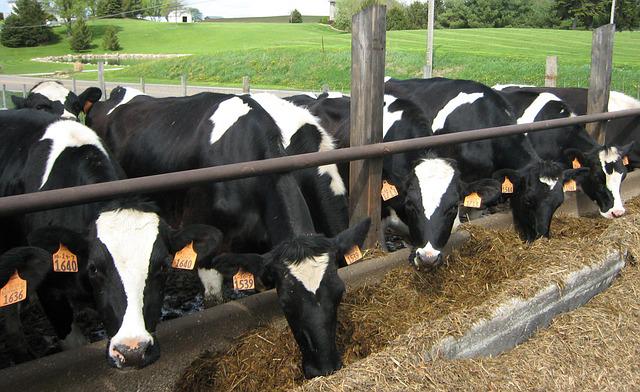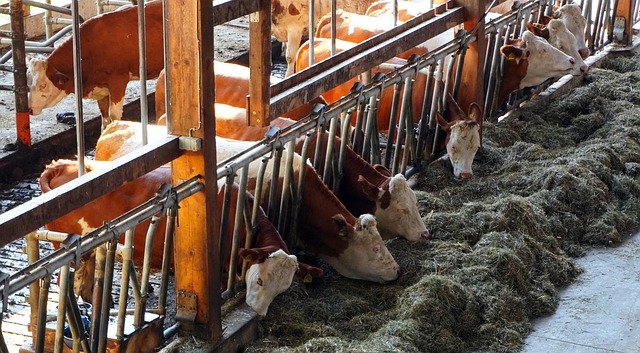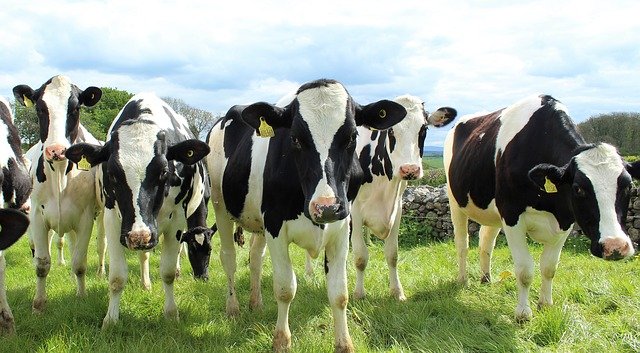Indian economy totally depends on farming. In total population, 58% of people, directly and indirectly, depend on farming for livelihood. The farmers not only show interest in plant-based farming but also do animal husbandry. And if we talk about animal husbandry then cow farming gets first priority. India ranked top in cattle farming in the world. The report in 2021 said that cow farming grew rapidly in India and the farmers also benefited from doing that. You will be surprised to hear that 30% of cattle inventory in the world comes from India.
#What Is Cow Farming?
Cow farming is the process of rearing cows for multi-purposes. The farmers get benefits from rearing cows. Dairy production, meat production, and leather production depend on cow rearing. Cows are physically big than other domestic animals so they need more space. For that their house needs more space too. Constructing a house for cows is most costly than for other animals. Maintains a cow is also very costly for small farmers. Raising cows for high productivity of milk for commercial purposes. And the dairy farming cow is a very profitable business at that time.

#Types of cows in India:
Below are the most common types of cows that we can observe in India:
- Bargur- brown color with white markings and medium-sized.
- Pullikulam / Alambadi- commonly seen in Tamil Nadu, and Karnataka. Almost black color, dark grey and white color cow available.
- Hallikar- originated in Karnataka.
- Khillari- originated in Maharashtra.
- Amritmahal- black and white color with sharp black horn.
- Kangayam- the breed was developed by the efforts and is mostly grey in color.
- Umblachery- originated in Tamil Nadu.
- Hariana- originated in the Gurgaon district of Haryana.
- Ongole- is known as Nellore and originated in Andhra Pradesh.
- Gir- Originated in Gir forests and known as Desan, Sorthiet.
- Sahiwal- originated in Pakistan.
- Red Sindhi- is mostly found in Karachi, Pakistan.
- Tharparkar- Originated in Pakistan.
- Krishna Valley- Originated from Karnataka.
#Methods:
Cow farming in India plays an important role in the farmers’ livelihood. Farmers who live in India and do cow rearing are dependent on this agricultural business process. This farming changes many small farmers in India. So now let’s know about the methods of cow rearing:
1. Handling:
Handling a cow needs very skillful farmers, who can easily handle one or more cows. Besides, they need to ensure good health and prevent disease in the cows. Most people’s livelihood depends on cow farming. If they provide Good health and ensure the prevention of disease, they can earn profit. If you asked why need to handle properly a cow then I can say that all know, cows are big.
For that, properly trained farmers needed to handle them. Balanced foods and a clean water supply are also important for rearing a cow. Must increase healthy food production to get better results and provide time-to-time vaccines to them to avoid harmful diseases.
There are also advantages of modern technologies that help to handle cows and create easy processes for the farmers. Modern farming technologies teach farmers how to maintain overall facts about cows.
2. Grazing:
For the overall development of an animal, grazing plays a vital role. And not all farmers can easily graze cows in the meadow. Well-trained farmers are needed for that task. Farmers should graze cows two or three days a week in a green field to ensure better health. Take them in a meadow that contains soft, green, and nutrient-dense grass for the best manufacturing capability. Healthy green grass can help to prevent many diseases.
3. House Management:
Proper housing is very important for every living animal. For others, small animals can avoid building a house that contains space. But for cows, farmers need to be serious. Cows need well –build airy houses to take rest and live. There are various designed houses observable for the cows, but most people in India prefer straw roofs and bamboo fences, some make fences with strong materials.
Keeping cows in shadowy spaces is important to save them from heat and rain, if not that can cause dangerous health issues. Keeping the proper temperature in the house is also important so farmers need to give value to it.
4. Reproductive Management:
In our country, cows are bred naturally and artificially. Artificial insemination is currently encouraged to breed cows. Because it is a modern method of reproduction. Large in size and healthy cows are needed for artificial insemination.
In this method, seeds are collected from improved breeds of bulls, processed, and bred in cows. This prevents the transmission of various diseases from bulls to cows and at the same time increases the productivity of cows.
5. Food Management:
To maintain the production and productivity of cows at the desired level, it is essential to provide a balanced and proper amount of food to the cows. The ingredients needed to make a balanced diet for cows are; Straw, green grass, granular food, and water. By adopting modern methods of processing cow’s food, digestion, nutritional value and production of food can be increased. At present several types of grass are cultivated in the country as cows’ feed. The need for green grass is essential for raising cows.
6. Care and Maintenance of Dairy Cows:
Cows need to be provided with adequate green grass, hay, and balanced granular feed. Must be milked at the same time by the same person every day in the same manner. The place where the cows live and the house should be kept clean and tidy. Should be cleaned regularly and even if the cow is not bathed regularly. Cows need to be milked at the same time every day and with the same person or using a machine.
7. Disease Management:
General characteristics of a healthy animal: Active, agile, aware of the surrounding conditions, and will take regular steps. The body structure will be beautiful; the skin will be smooth, shiny, and loose. When the animal is diseased, the body temperature decreases or increases. There is a change in breathing and reluctance to eat. The spread of the disease may be different for different diseases.
The germs of some diseases can be carried in the air and even spread by contaminating the soil and water. Healthy cattle should be kept separate from sick cattle. Necessary treatment should be taken by contacting the local veterinarian as soon as the disease is seen. Healthy animals need to be vaccinated to prevent infectious diseases. Animal safety must be ensured on the farm.
8. Cow-Fattening Technology:
One of the sources of animal meat is beef. Cow fattening technology is a technology to increase the production of beef rapidly using modern technology. Cows should be provided granular feed at the rate of one percent of their body weight and fibre at the rate of 2 percent. Food should be distributed in 2-3 portions throughout the day. The mixture of granular food should be kept correct.

#Advantages:
1. Provides Essential Nutrients:
In our daily life, we need essential nutrients for livelihood. And most of the nutrients that our body needs come from cows. Cows give us milk, meat, leather, and essential products that produce from horns. Milk contains all types of nutrients, fats, and vitamins that our bodies need to develop. We can make healthy and delicious items with meats and milk. Leather is also used to prepare various essential daily useable things.
2. Profitable and Productive Income Sources:
As we previously told that many small farmers, directly and indirectly, depend on cow farming. Cow farming in Kerala takes the largest producing state in India. The main income source of a family comes from rearing cows. Though the beef production business in India’s various states is forbidden for religious facts there is a huge demand for milk. India stays above dairy production.
3. Onetime Investment:
The most important advantage of cow rearing is the farmer needs to invest in time. To build a house, buying animals and caring for them maybe take big capital but after that, if the business goes well and farmers maintain them, they can earn good money.
4. Keep More Cows At Once:
If you construct a house on time and make it big with good space then you can keep more and more cows there. Keeping cows in one place can save you money and reduce the wastage of food. If a farmer rears more than one then it will be very profitable for him.
5. Natural Gas Produce:
Using cows’ feces farmers can produce natural gas. So cow farming is very important in our daily lives. Cooking gas is a big example of natural gas production. Cow feces are also used in various tasks. In India, people think cow feces are holy so they use them as smears in the mud hut.

#Disadvantages:
1. Fight with Each Other:
The most common problems of cow rearing are they fight with each other. And that is very harmful to their health. In many situations, most cows died fighting with each other. So the farmers need to take extra care of this problem. Make the house with a big space and make the distance between two cows.
2. Easily Diseased:
The immunity power of cows and other animals that are based on cattle can easily be diseased. By rising together they are affected by the harmful disease. In an unhealthy environment, providing unhealthy foods, and lack of caring they are unable to build immunity power in their body.
3. Difficult To Diagnose:
Diagnosing animals like big-sized is too difficult. For extra spending money, small farmers in India are unable to effort. Modern diagnosis materials are very costly. Scientists are unable to invent diagnostic equipment for animals that big-sized like cows. Providing them with proper treatment, and managing them is also very ticklish.
4. Pollution:
Do you think cows rearing caused pollution? If I say yes it is. Don’t be surprised. If the farmers used and follow all guidance then pollution can’t occur. But if not follow and gather them like cruel rulers then nothing to say. From leather industries to meat markets everywhere you can see the picture.
5. Food Wastes:
Wastes of food are one of the most irritating problems in cow farming. Keeping animals gathered and providing food is not a good idea. The animals fight with each other to grab food. During this, they are fed nothing but waste more.
